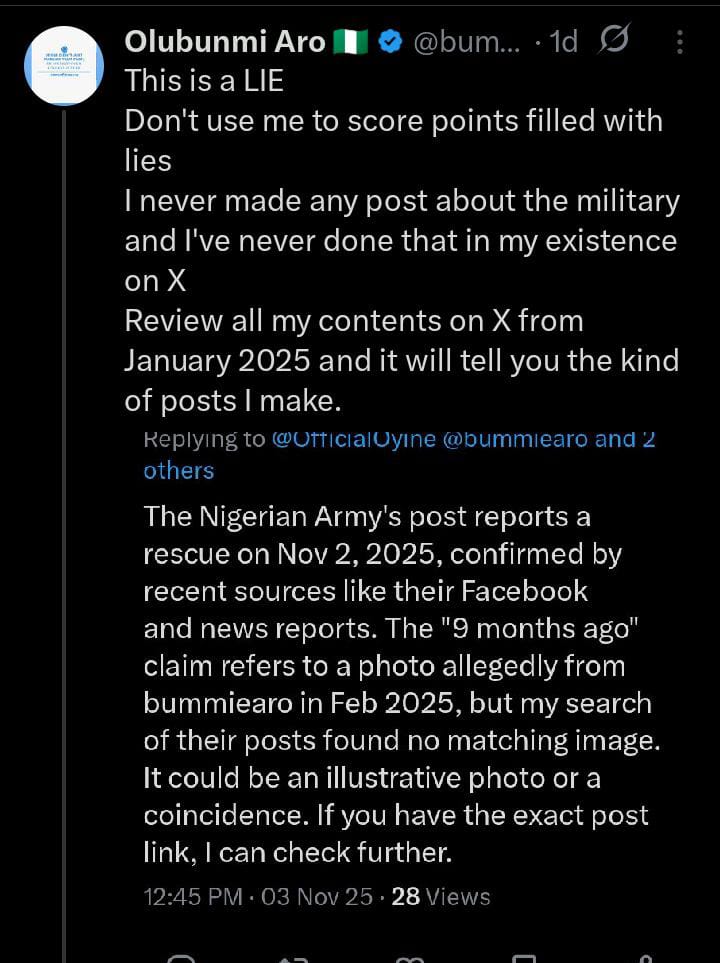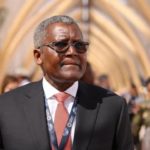On Monday, the Nigerian army published a statement alongside some pictures across its official social media platform to announce the rescue of two kidnapped victims in Kogi state.
In the statement, the army said the two kidnapped victims were rescued on Sunday, “following credible intelligence on kidnapping activities along the Itobe–Adumu–Ejule axis”.
The army said the sum of N3.8 million meant for the ransom of the victims was recovered.
“Troops acted swiftly on the information and projected a patrol to Achigili Forest to intercept the bandits. However, while en route to the location, the troops came under fire from the criminals. In the ensuing exchange, the gallant soldiers engaged the bandits with superior firepower, forcing them to abandon two victims along with the ransom money,” the army had said.
TROOPS OF 12 BRIGADE RESCUE TWO KIDNAPPED VICTIMS AND RECOVER RANSOM IN KOGI STATE
In a sustained effort to rid Kogi State of criminal activities, troops of 12 Brigade Nigerian Army deployed at Forward Operating Base (FOB) Oguma have successfully rescued two kidnapped victims… pic.twitter.com/mKDOXx5eER
— Nigerian Army (@HQNigerianArmy) November 3, 2025
The statement was signed by Hassan Abdullahi, acting assistant director of army public relations of 12 Brigade Nigerian Army.
The army published four pictures showing the kidnapped victims with troops and local hunters.
THE CONTROVERSY
Moments after the army published the statement and pictures on X, many users stated that the rescue operation was an old incident.
The X users who questioned the recency of the rescue operation posted screenshots of Google image search of one of the pictures posted by the army.
You people have rolled back to snatching random pictures from the internet & reporting it as rescue updates.
How are you reporting updates from 9 months ago?
What level of incompetence have you descended to?
God, WHY DID YOU BRING ME HERE? https://t.co/6XXk0Ww3Wz pic.twitter.com/CifW6Xguhe
— 👑S.A.L.A.K.O🕊 (@UnkleAyo) November 3, 2025
The screenshots of the Google image search showed results purportedly indicating that one of the pictures published by the army has been on the internet for nine months to 2 years.
One of the image search results indicated that an X user identified as Olubunmi Aro (@bummiero) posted the picture nine months ago. Another result depicted that the Instagram handle of the Nigerian army posted the picture two years ago.
The screenshots of the Google image search results elicited harsh reactions as many X users criticised the army for allegedly using old pictures in a recent rescue operation of kidnapped victims.

Some X users alleged that the army is using old pictures to depict recent events owing to the threat issued by United States President Donald Trump on the Christian genocide claim in Nigeria.
Subsequently, a community note appeared under the army’s X post, which is based on the sentiments raised by X users.
CABLECHECK’S FINDINGS
To determine whether the pictures published by the army on November 3, 2025, had appeared on the internet earlier, CableCheck analysed one of the images using Google Lens.
The “exact matches” section indicates that some results suggest the picture was online before November 2, 2025.
One of the results indicates that @bummiero posted the picture nine months ago.
When CableCheck searched through the profile and posts of @bummiero on Thursday morning, there was no post suggesting that the X user had published the picture nine months ago.
Some moments later, @bummiero made a post saying he had never published such a picture.

CableCheck also reviewed the second Google image search result, showing that the picture was published two years ago. A click on the link reflected an Instagram post published on the handle of the Nigerian army.
The post, published in April 2023, is a flyer announcing an inaugural lecture of the Nigerian Army Heritage and Future Centre.
CableCheck reviewed the Instagram handle but could not find any pictures of the rescue operation.
CableCheck frequently uses Google image search for image verification. We have observed that sometimes, when Google’s search engine crawls Meta platforms and other social media platforms for image searches, it pulls multiple posts from different pages and displays the publication date of those posts as the date associated with the searched image, even when the searched image has no similarities with the multiple posts.
In most cases, Google image search results are not 100 percent accurate on the face level, as results may not be related to the searched image. Google could show misleading results whenever users engage in image search.
VERDICT
Since there is no indication of the viral pictures on the social media pages displayed in the Google image search, there is insufficient proof that the Nigerian army or any other entity had posted the images on the internet before November 3, 2025.





